Strengths and Weaknesses of the U.S. Men’s Swim Team for Tokyo Olympics
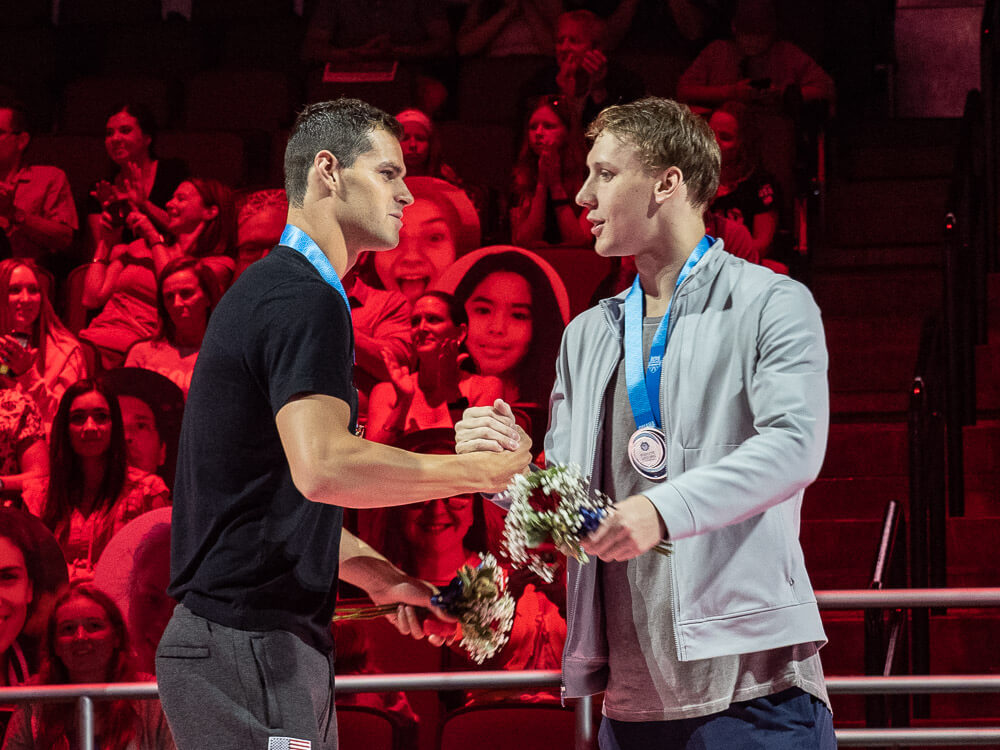
Strengths and Weaknesses of the U.S. Men’s Swim Team for Tokyo Olympics
At the 2016 Olympics in Rio, the U.S. men’s swim team captured five individual gold medals and 14 total individual medals. Ten different men were responsible for those honors: Ryan Murphy, Michael Phelps, Anthony Ervin, Chase Kalisz, Cody Miller, Conor Dwyer, David Plummer, Josh Prenot, Nathan Adrian and Connor Jaeger.
Five years later, after a Trials that likely marked the end of the road for a huge group of veterans, only two of those men are on the team for the Tokyo Olympics. But now that the team has taken shape at the Olympic Trials, there are just four American men who are favored to capture individual honors: returnees Murphy, Kalisz and Caeleb Dressel, who has blossomed into the world’s best sprinter, and first-time Olympian Michael Andrew. Aside from that, the American men could be in some trouble.
Freestyle
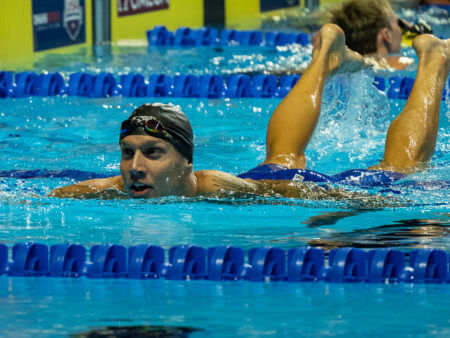
Caeleb Dressel after winning the men’s 100 fly at Olympic Trials — Photo Courtesy: Peter H. Bick
Caeleb Dressel is the favorite for gold in the 50 and 100 freestyle, and he is a threat to each of Cesar Cielo’s world records in those events. He swam a 21.04 in the 50 free at the Olympic Trials to tie his American record, and while he ranks second in the world in the 100 free at 47.39, he has been as quick as 46.96, just 0.05 off the world record. Meanwhile, both Michael Andrew in the 50 free and Zach Apple in the 100 free have outside shots at podium finishes.
Kieran Smith is the top U.S. hope in the 200 and 400 free, but while he swam his best times by a significant amount at Trials, he will still need to drop more to make a podium push. He ranks sixth in the world among Olympic qualifiers in the 200 free at 1:45.29 and eighth in the 400 free at 3:44.86.
It’s the same story with a third Florida Gator, Bobby Finke, in the 800 and 1500 free, strong enough to likely make a final but not yet to contend for a medal. Finke ranks ninth among Olympic qualifiers in the 800 free at 7:48.22 and fourth in the 1500 at 14:46.06.
Backstroke
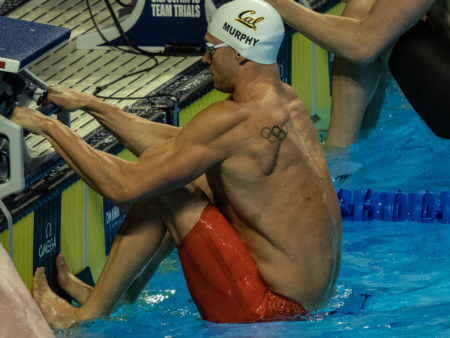
Ryan Murphy at Olympic Trials — Photo Courtesy: Peter H. Bick
Backstroke is the strongest of the strokes for the U.S. men, and it’s largely because of Ryan Murphy, who won Rio gold in both backstrokes. Murphy is currently third in the world rankings in the 100 back, close behind Russian rivals Evgeny Rylov and Kliment Kolesnikov, and second behind Rylov in the 200 back. Murphy likely has more in the tank from U.S. trials, and it would be surprising if he does not medal in both events at the Tokyo Olympics. He certainly has a shot at repeat gold, particularly in the 100 back. Accompanying Murphy are two Olympic rookies, Hunter Armstrong in the 100 and Bryce Mefford in the 200, and while both swam well at Trials, jumping into the medal picture would be a slight surprise.
Breaststroke
The American men got a boost in the 100 breast when Michael Andrew twice broke the American record and got down to 58.14, making him the third-fastest performer in history behind Adam Peaty and Arno Kamminga. Replicating or surpassing that effort in the Olympic final could get Andrew onto the podium, and Andrew Wilson looks like a swimmer who can make it to the final.
Different story in the 200 breast, where the likes of Shoma Sato, Zac Stubblety-Cook and world record-holder Anton Chupkov have all been 2:06 this year. Nic Fink swam an impressive 2:07.55 at Olympic Trials, but this event has progressed so much since 2016, when Dmitriy Balandin won gold in 2:07.46. Now, anyone hoping to win a medal at the Tokyo Olympics will have to be around a 2:06, and there’s no one in the U.S. right now knocking on the door.
Butterfly
Here, we have a tale of two very different events. Caeleb Dressel is the world record-holder at 49.50, and his nearest rival (Kristof Milak) has never been under 50. Dressel’s semifinal time from Olympic Trials was faster than any other human has ever swum, and he’s targeting quicker marks at the Tokyo Olympics. On the contrary, neither of the two U.S. Olympians in the 200 fly (Zach Harting and Gunnar Bentz) have ever broken 1:55, and Harting ranks just eighth in the world among Olympic qualifiers. It’s going to take a 1:54-low or 1:53-high to medal here in Tokyo, so the Americans need faster times to have a shot.
Individual Medley
One of the most stunning efforts of Olympic Trials was Michael Andrew throwing himself in contention for Olympic gold in the 200 IM, where he swam a time of 1:55.26 in the semifinals (and 1:55.44 in the final). In both races, Andrew turned for the last 50 more than a second under world record pace before fading badly down the stretch, so he will hold his freestyle together if he has a chance of hanging on for gold. Chase Kalisz, meanwhile, only ranks seventh in the 200 IM among Olympic qualifiers this year, but he is certainly a medal contender in this one, and while Kalisz would be hard-pressed to beat world champion Daiya Seto in the 400 IM, he has a very real shot at silver after posting a 4:09.09 at Trials. Jay Litherland, the world championships silver medalist, would also be in the medal mix in that one.
Relays
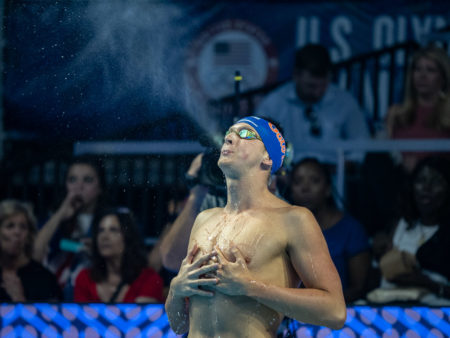
Kieran Smith prior to winning the 200 free at Olympic Trials — Photo Courtesy: Peter H. Bick
Right now, the American men project as co-favorites with Russia in the men’s 400 free relay—even though the composite numbers show Russia a bit ahead right now, potential improvement favors the U.S.—and also as favorites in the 400 medley relay, thanks largely to the improved breaststroke leg Andrew could provide. The 800 free relay, however, could be in trouble. Even though the Americans have assembled a solid crew of Kieran Smith, Townley Haas, Drew Kibler and Andrew Seliskar, there are three other countries (Great Britain, Russia and Australia) with very strong quartets that could end up denying the U.S. men a medal in an Olympic relay for the first time ever.
Overall
The men’s team the Americans take to the Tokyo Olympics is likely one of the weakest in several Olympic cycles. That’s even with Caeleb Dressel, who successfully took over the mantle from Michael Phelps as best swimmer in the world. Dressel could become only the third male swimmer to win at least three individual gold medals at one Olympics, joining Mark Spitz (who won four in 1972) and Phelps (who won four in 2004 and five in 2008). Aside from that, the initial projections do not look too promising.
Maybe this team wins around eight medals and three golds at the Games, plus whatever happens in the relays. That seems about right at this stage. Even if the U.S. men outperform this, they still have a large margin to make up compared to their predecessors from 2016 in Rio.
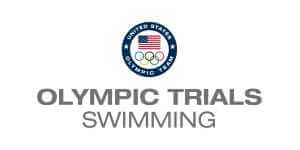

- 2016 USA TRIALS ARCHIVE
- ARCHIVES OF OLYMPIC TRIALS VIA SWIMMING WORLD VAULT
- 2021 USA OLYMPIC TRIALS WAVE I CUTS
- 2021 USA OLYMPIC TRIALS WAVE II CUTS
- HEAD USA OLYMPIC COACHES
- 2016 FULL RESULTS
- WAVE I FULL RESULTS
- PSYCH SHEET
- DAY ONE RESULTS
- DAY TWO RESULTS
- DAY THREE RESULTS
- DAY FOUR RESULTS
- DAY FIVE RESULTS
- DAY SIX RESULTS
- DAY SEVEN RESULTS
- DAY EIGHT RESULTS




Good story, but I disagree with your medal summary. The U.S. men have to be considered gold medal favorites in at least 5 events:
50 & 100 free, 100 fly (Dressel)
200 IM (Andrew)
400 medley relay
And they have to be considered medal favorites in 5 other events:
100 Back, 200 Back (Murphy)
100 Breast (Andrew)
400 IM (Kalisz)
400 Free Relay
That’s favorites to win 10 total medals, 5 gold.
Robert – FWIW
Article says “around 8 medals and 3 gold” plus the relays.
You are saying “8 medals and 4 golds plus the relays”.
I think the difference MAY be due to Dressel not having the fastest time in the 100 free this year – but agree with you, he will win that…
I agree. But there are young guys on team with no international experience – but I am pulling for all of them go team USA